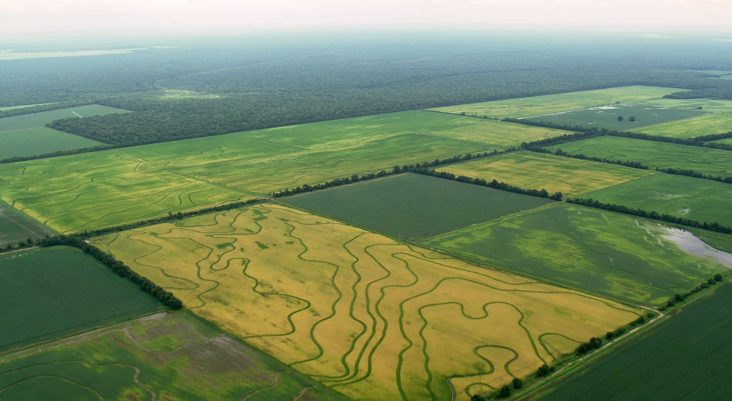Net farm incomes projected to drop in 2024
by April 4, 2024 12:53 pm 444 views

Net farm incomes in Arkansas are projected to drop by $500 million in 2024, according to an analysis from the Rural & Farm Finance Policy Analysis Center.
The “Spring 2024 Arkansas Farm Income Report” was co-authored by Hunter Biram and Ryan Loy, both extension economists for the University of Arkansas System Division of Agriculture. The report said the state’s projected 15% drop in net farm income is smaller than the previously forecasted 25.5%.
“After record-setting farm income in 2022, Arkansas saw a backpedal in 2023 that is projected to extend into 2024 with another $0.5 billion decline in net farm income. The number one thing driving the drop of income is lower prices for crops across the board,” the report stated.
Abundant soybeans and corn production in Brazil and the United States last year is driving prices down, Biram said. Soybeans are the state’s top crop with about three million acres harvested in 2023, according to the United States Department of Agriculture.
“We have a lot of stocks on hand across most commodities right now which is driving a lot of that drop in crop receipts,” he said.
The report said crop receipts are estimated to decline as many crop and livestock prices are projected to move lower in 2024. Biram said the model used in this analysis “is expecting one or two cuts in the interest rate this year, resulting in lower interest expense. Fuel and fertilizer expenses are expected to fall too.”
Emergency relief payments from the federal government spurred incomes in 2022.
“What made 2022 farm income relatively high was all the government payments from emergency relief programs,” Biram said.
PLC, or Price Loss Coverage, is triggered when marketing year average price of a covered commodity is less than the respective effective reference price.
Biram said that while the data for the analysis is projecting long grain rice to fall below the $14 reference price, “one strong caveat is that this model is stochastic,” which means there are many difference prices that are projected and an average is taken across those prices.
“While there is a low chance of the long grain reference prices falling below $14 per hundredweight, there’s a much higher chance that the average price will be above the reference price and not trigger PLC payments,” he said.
Biram is also expecting there to be little chance for ARC – Agriculture Risk Coverage – payments.
The report stated that “production expenses are projected to offer some relief with a nearly $0.6 billion decline as feed and fertilizer move lower. Although net farm income has declined from record levels, estimated 2024 levels are still higher compared to 2021.”
Livestock receipts are expected to decline $0.4 billion in 2024 on lower prices for broilers, turkeys and eggs.
Cattle and calves receipts are expected to decline only slightly in 2024, as higher prices help offset lower supplies. Continued projected higher prices in 2025 and 2026 will drive cash receipts higher, the report noted.
Arkansas has 37,400 farms, according to USDA. Agriculture is the top economic sector in the state with an overall value that exceeds $20 billion annually.
